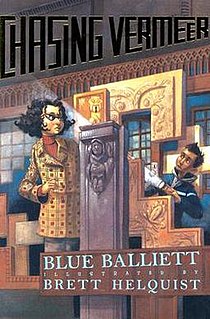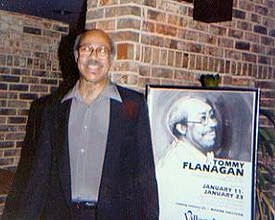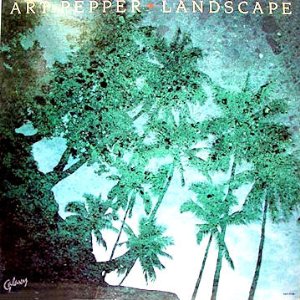
Arthur Tatum Jr. was an American jazz pianist who is widely regarded as one of the greatest in his field.

Arthur Stewart Farmer was an American jazz trumpeter and flugelhorn player. He also played flumpet, a trumpet–flugelhorn combination especially designed for him. He and his identical twin brother, double bassist Addison Farmer, started playing professionally while in high school. Art gained greater attention after the release of a recording of his composition "Farmer's Market" in 1952. He subsequently moved from Los Angeles to New York, where he performed and recorded with musicians such as Horace Silver, Sonny Rollins, and Gigi Gryce and became known principally as a bebop player.

Callen Radcliffe Tjader, Jr. was an American Latin jazz musician, known as the most successful non-Latino Latin musician. He explored other jazz idioms, even as he continued to perform the music of Cuba, the Caribbean, Mexico and Latin America.

Arthur Edward Pepper Jr. was an American alto saxophonist and very occasional tenor saxophonist and clarinetist. A longtime figure in West Coast jazz, Pepper came to prominence in Stan Kenton's big band. He was known for his emotionally charged performances and several stylistic shifts throughout his career, and was described by critic Scott Yanow as "the world's great altoist" at the time of his death.

Chasing Vermeer is a 2004 children's art mystery novel written by Blue Balliett and illustrated by Brett Helquist. Set in Hyde Park, Chicago near the University of Chicago, the novel follows two children, Calder Pillay and Petra Andalee. After a famous Johannes Vermeer painting, A Lady Writing, is stolen en route to the Art Institute of Chicago, Calder and Petra work together to try to recover it. The thief publishes many advertisements in the newspaper, explaining that he will give the painting back if the community can discover which paintings under Vermeer's name were really painted by him. This causes Petra, Calder, and the rest of Hyde Park to examine art more closely. Themes of art, chance, coincidence, deception, and problem-solving are apparent.

Hampton Barnett Hawes, Jr. was an American jazz pianist. He was the author of the memoir Raise Up Off Me, which won the Deems-Taylor Award for music writing in 1975.

Thomas Lee Flanagan was an American jazz pianist and composer. He grew up in Detroit, initially influenced by such pianists as Art Tatum, Teddy Wilson, and Nat King Cole, and then by the newer bebop musicians. Within months of moving to New York in 1956, he had recorded with Miles Davis and on Sonny Rollins' landmark Saxophone Colossus. Recordings under various leaders, including the historically important Giant Steps of John Coltrane, and The Incredible Jazz Guitar of Wes Montgomery, continued well into 1962, when he became vocalist Ella Fitzgerald's full-time accompanist. He worked with Fitzgerald for three years until 1965, and then in 1968 returned to be her pianist and musical director, this time for a decade.

Art Pepper Meets the Rhythm Section is a 1957 jazz album by saxophonist Art Pepper with Red Garland, Paul Chambers, and Philly Joe Jones, who at the time were the rhythm section for Miles Davis's quintet. The album is considered a milestone in Pepper's career.

Art Pepper + Eleven – Modern Jazz Classics is a 1960 jazz big band album by saxophonist Art Pepper performing under the direction and arrangements of Marty Paich. The recording is one of several dates Pepper made with Paich and his big band in 1959 and is the only one with Pepper as leader. The recording focuses on Paich's big band arrangements of modern jazz classics, including Denzil Best's "Move," Thelonious Monk's "'Round Midnight," Gerry Mulligan's "Walkin' Shoes". Highlights of the recording are Pepper's clarinet performances on "Anthropology" and the alternate takes of "Walkin'."
Whitney Lyon Balliett was a jazz critic and book reviewer for The New Yorker and was with the journal from 1954 until 2001.

Selflessness Featuring My Favorite Things is a posthumous album by jazz musician John Coltrane, released in 1969. The album juxtaposes two tracks recorded live at the 1963 Newport Jazz Festival with a single track ("Selflessness") recorded in a studio in Los Angeles in 1965.

Living Legend is a 1975 jazz album by saxophonist Art Pepper playing with Hampton Hawes, Charlie Haden and Shelly Manne.

Landscape is a live 1979 jazz album by saxophonist Art Pepper playing with George Cables, Tony Dumas and Billy Higgins. The album was recorded at Shiba Yūbin Chokin Hall, Tokyo, at the same concerts that produced Besame Mucho.

Straight Life is a 1979 jazz album by saxophonist Art Pepper playing with Tommy Flanagan, Red Mitchell, Billy Higgins and Kenneth Nash.
Straight Life may refer to:

To Be or Not to Bop: Memoirs of Dizzy Gillespie is a 1979 book written by jazz musician, composer and band leader Dizzy Gillespie. The book was released in July 1979 by Doubleday. The University of Minnesota Press re-released the book in 2009.

This is a timeline documenting events of Jazz in the year 1926.
Owen Joseph "Sonny" Igoe was an American jazz drummer and music educator who, toured with the orchestras of Tommy Reed (1913–2012), Les Elgart, Ina Ray Hutton, Benny Goodman, and Woody Herman from the mid-1940s to the mid-1950s.














